During the completion of my Master of Arts in Educational Technology (MAET) at Michigan State University, I have had the opportunity to create a dynamic set of artifacts to demonstrate my learning. From these many artifacts, I chose nine to showcase here.
I have divided these artifacts into three categories: Creative Expression Through 21st-Century Literacies, Curriculum and Assessment, and Redesigning Problems of Practice. To learn more about any project, click on the photograph or the link above the photo to see its related project page.

One long-term goal I have for my students is that they would become creators in the world as they learn to express themselves. These three artifacts represent some of my own creations in search of making meaning, seeking out my passions, and bringing excellence to my classroom.
| Making to Learn With Arduino Lilypad | Creating a Digital Animation Using Code | Updating a Classic: Digital Self-Portraits |
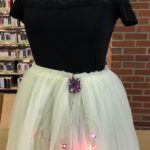 |
 |
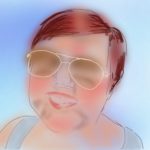 |
| This multi-step networked learning project involved learning the basics of coding with Arduino using only online resources. I was so pleased with the outcome of the project that I decided to share it with other makers at Ann Arbor Creativity & Making Expo (AACME) 2018. | Curiosity and passion are two driving forces behind every artist and maker. When I learned to code in Scratch to create an animated story, I let myself be driven by my own passion and curiosity to do something I had wanted to do since childhood. | Technology knowledge (TK), when thoughtfully combined with content knowledge (CK) and pedagogical knowledge (PK) (Mishra & Koehler, 2009), can create a sweet spot in the classroom. This is the case when students use an iPad app in place of paper and pencils to create digital self-portraits. |

In my past role as an art educator and in my current role as a science, technology, engineering, arts, and math (STEAM) educator, I have long favored a non-traditional approach to curriculum and assessment. These three artifacts represent the thoughtful incorporation of technology into curriculum and formative and summative assessment.
| Robotics in Grade 5: A Formative Assessment | Using Minecraft as a Tool to Assess Students’ Understanding of Symmetry | Blended Learning: An Art Unit in Canvas |
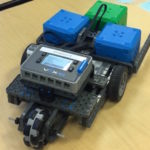 |
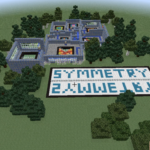 |
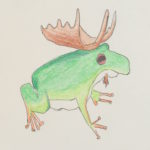 |
| Fifth-grade robotics is a dynamic, challenging, and exciting curriculum where students learn to build, modify, and program a robot to move autonomously. The use of digital tools to aid in formative assessment allows me to communicate with teams outside class time and modify my instruction based on students’ needs. | Symmetry is an important concept in the elementary art room, in engineering and design, and in math. By using Minecraft as a digital assessment tool, students are engaged, it precludes the need for physical manipulatives, and it is easy for students to practice, fail, and iterate on their designs. | To serve the diverse needs of my art students I created a blended learning art unit set in the learning management system (LMS) Canvas. Throughout the unit, students work independently and in small groups to learn about animal adaptations as they create tunnel books featuring mixed beasts. |
Problems of practice are a fact of life for educators. With creative thinking and perseverance, we can rethink problems to come up with creative solutions. These three artifacts represent problems in my practice that I was able to approach with a fresh perspective.
| Developing Computational Thinking Skills in Elementary School Students | Scaffolding Creative Thinking With Computational Thinking and New Media | Redesigning a Classroom Space for 21st-Century Learners |
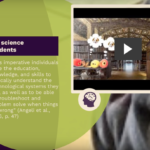 |
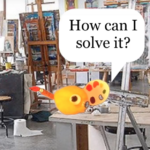 |
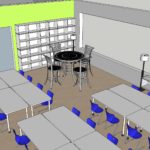 |
| Although my students enjoy coding, some have a difficult time with breaking problems into smaller problems and with debugging their code when it does not work properly. In an attempt to help my struggling learners, I conducted a literature review of 18 peer-reviewed research articles. Through that research, I discovered several interventions for helping them. | As an art educator, creative thinking is important to me, making it the focus of much of my research and creative work as a student and educator. Deschryver & Yadav (2016) wrote about how to scaffold creative thinking with computational thinking and new literacies. In a 3-minute video, I synthesized what they shared and extracted three key points to help other educators. | The classroom environment is sometimes referred to as TheThirdTeacher+ (O’Donnell, Wicklund, Pigozzi, Anderson, & Mau, 2010). As such, it is important to design it to meet the needs of students as they acquire the 21st-century skills of communication, collaboration, systems thinking, creativity, and analytical habits (Long, 2012). Using SketchUp, I created my ideal teaching space. |
References
Deschryver, M. D., & Yadav, A. (2016). Creative and computational thinking in the context of new literacies: Working with teachers to scaffold complex technology-mediated approaches to teaching and learning. In Creativity, Technology & Teacher Education (pp. 139-159). Waynesville, NC: AACE.
Long, C. (2012). Teach your students to fail better with design thinking. Learning & Leading with Technology,16-20. Retrieved from https://static1.squarespace.com/static/509c0d15e4b058edb8f35a86/t/50f49750e4b0c7661ad2efc5/1358206800803/FailBetter_DesignThinking ISTE article.pdf
Mishra, P., & Koehler, M. (May 2009). Too cool for school? No way! ISTE (International Society for Technology in Education), 14-18.
O’Donnell, Wicklund, Pigozzi, Anderson, & Mau, B. (2010). 79 Ways You Can Use Design to Transform Teaching Learning. Retrieved from https://static1.squarespace.com/static/509c0d15e4b058edb8f35a86/t/50ec7ca4e4b01d8c697c0b6c/1357675684568/79 Ideas Overall List.pdf
IMAGES
All images and videos on this page were created by Sarah Van Loo.
